Swissloop is hovering on a wave of success
With its second place in the Hyperloop contest in the United States, the Swiss engineering collective Swissloop has caused quite a stir. Now they are ready to take the next step.

A network of Hyperloop tubes that transport goods and people at up to 750 miles per hour? To many people, this undoubtedly sounds extremely futuristic. The reality of Swissloop, however, is a far cry from science fiction. In a small workshop at Empa – the Swiss Federal Laboratories for Materials Science and Technology in the municipality of Dübendorf – the two project managers Nathalie Nick and Pascal Finker report on the current state of progress. “You really need to have a passion for this project – it’s certainly not worth participating just for the trip to Los Angeles,” the ETH students say with a laugh.
Indeed, the place reeks of hard work – by both heads and hands. Screwdrivers and machine tools are scattered all around the latest “Claude Nicollier” pod, the Swissloop projectile bearing the name of the Swiss astronaut and test pilot who travelled into space on four NASA space shuttle missions. This was the pod the Swiss team entered in the Hyperloop contest in Los Angeles last summer – a competition initiated by Tesla founder Elon Musk to jump-start the technology. Four years ago, the eccentric billionaire called on students all around the globe to develop high-speed pods for his Hyperloop transport system. Because someday, the concept, realized in the form of a magnetic levitation train, will not only contribute to transporting goods, but also people – in a cleaner and more efficient way than planes or conventional high-speed trains.
However, the technology and above all the infrastructure are still in their infancy. This is why Elon Musk adopted an open concept and organized a competition. The best of several hundred teams compete on a one-mile test track at the Space-X headquarters in Hawthorne, Los Angeles. This July, in the finals of the four best teams, a team from Munich emerged victorious. The competitors from the Swiss Federal Institute of Technology in Lausanne (EPFL) came in third; Swissloop – an independent association of students from the ETH Zurich and other Swiss universities – achieved an outstanding second place. In addition, the team received an innovation award because their drive concept came closer to Elon Musk’s original vision than the German team’s electric rotary motor.
Gallery of «Claude Nicollier»
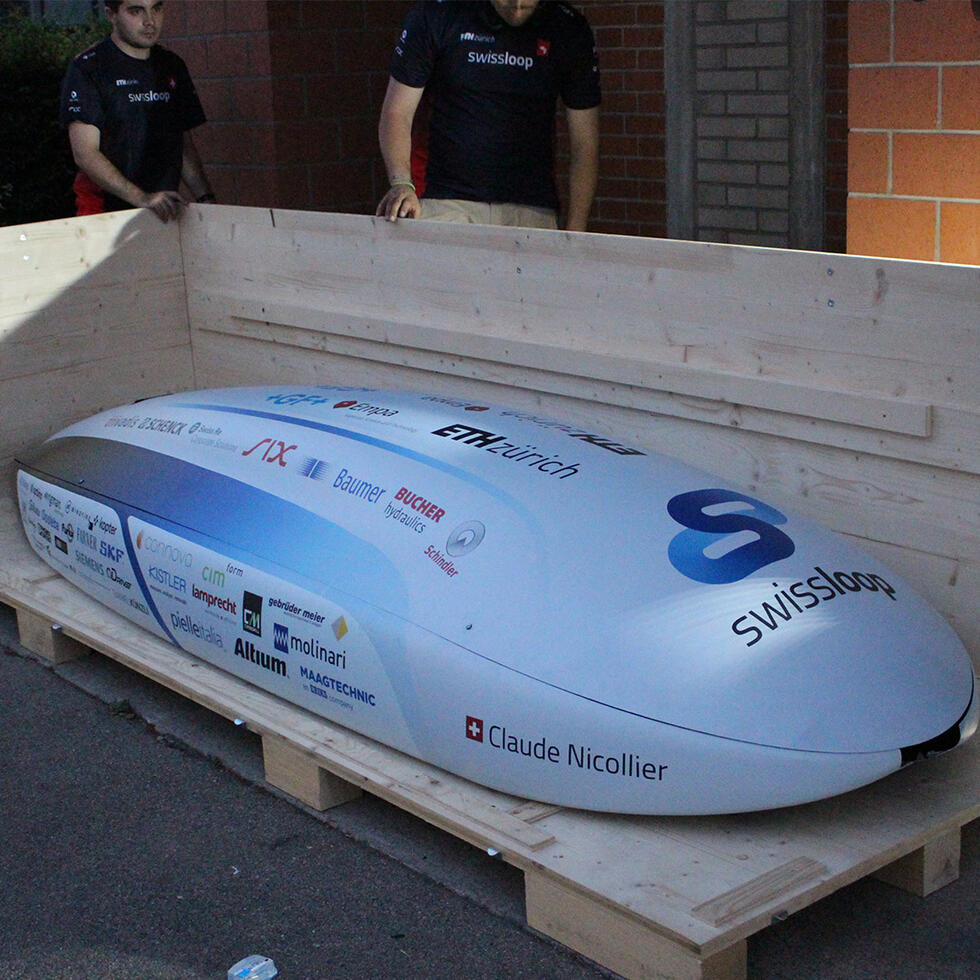
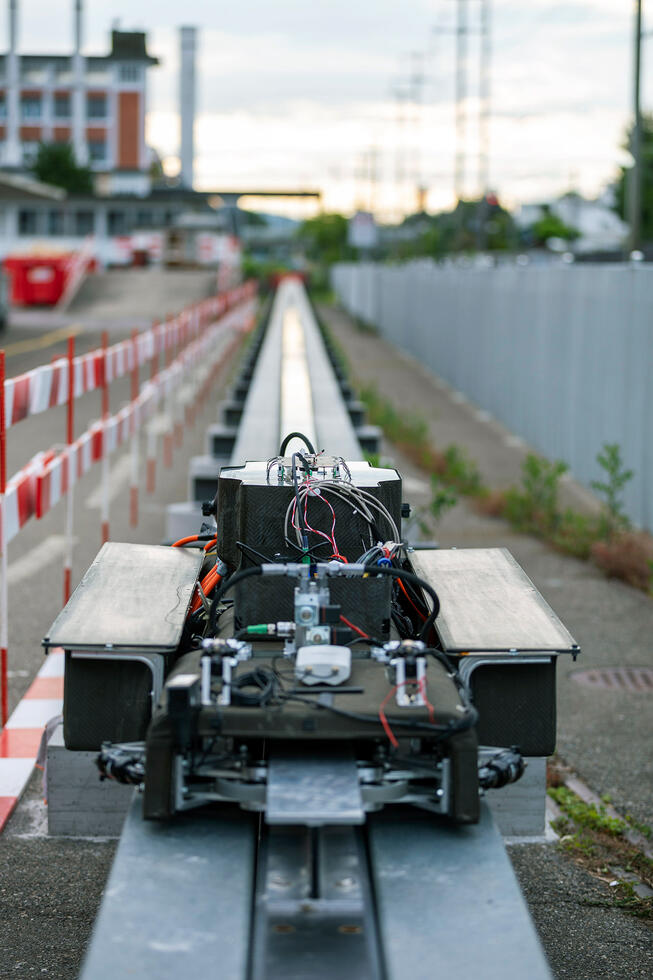
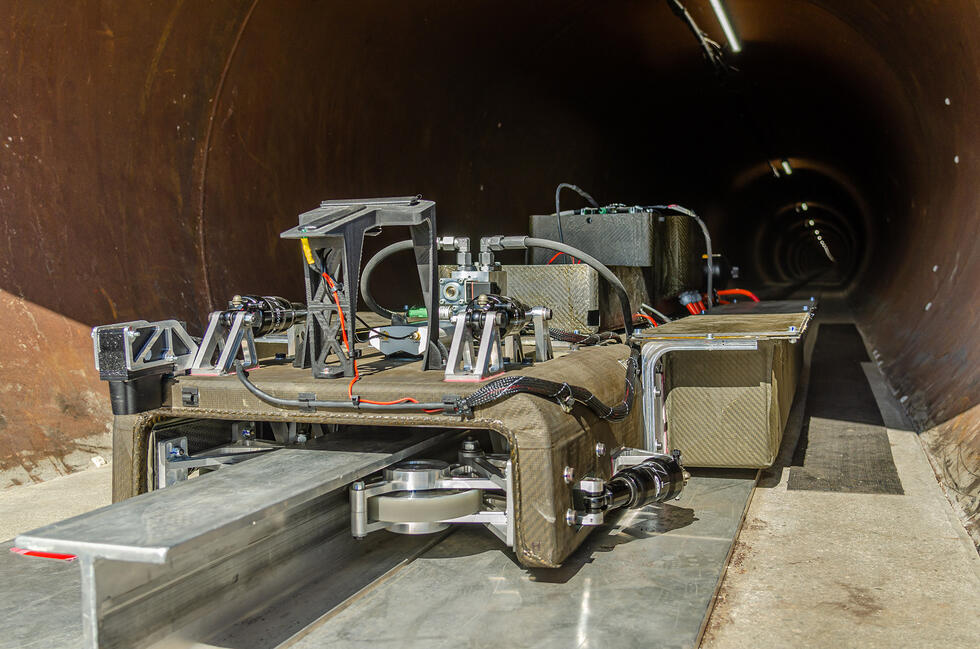
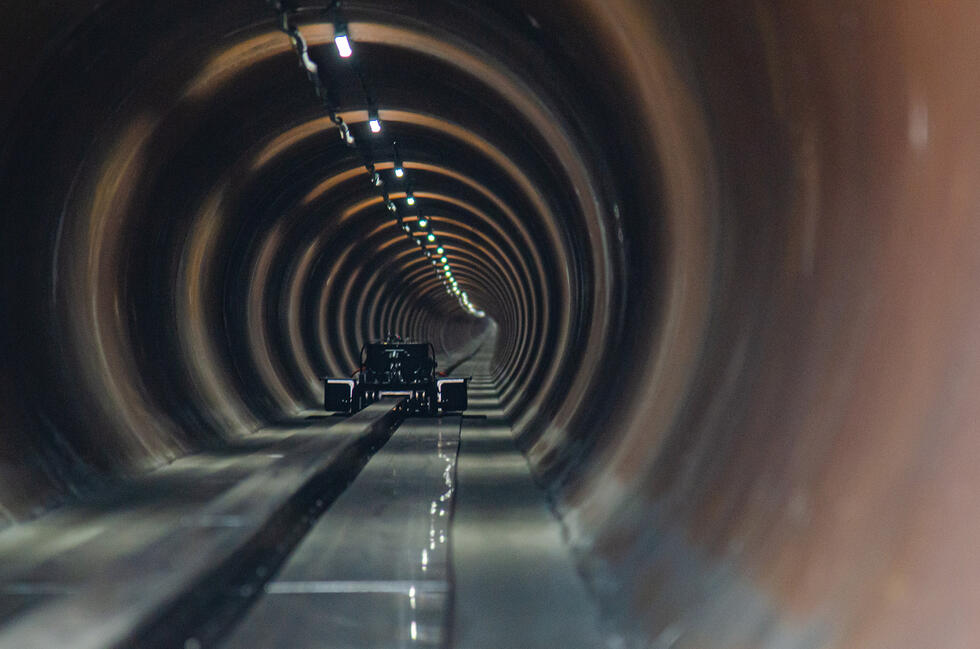
Magnetic power for maximum performance
The heart of the successful Swiss pod is a linear induction motor. Put simply, it consists of an elongated steel core around which a vast number of copper coils are wound, Pascal Finker explains. “One of these electromagnetic packages is located on either side of the pod, just a few millimeters away from the track’s guide rail. The coils are supplied with a high-frequency alternating current, thus generating a moving magnetic field. This magnetic field induces eddy currents in the aluminum guide rail, which in turn generate a magnetic field of their own along the length of the rail. The interaction of the two magnetic fields pushes the coils and thus the entire pod along the rail. Thanks to the non-contact mode of operation, the drive is completely frictionless and thus results in a powerful and energy-saving drive.” Compared to a conventional rotary motor, it is also ideally suited for high speeds, as it does not have any rotating components that could run up against a mechanical limit at excessively high speeds.
In Hawthorne, this drive accelerated the “Claude Nicollier” pod to an impressive 155 miles per hour within just twelve seconds. There were several reasons why the pod didn’t quite make first place, Nathalie Nick explains. On the one hand, the winning team from Munich used the same technology, an electric rotary drive, for the third consecutive year, and they were thus able to consistently optimize the entire pod. The Germans are currently the experts in this field. Swissloop, in contrast, chose a riskier path with the induction motor, which however, according to Nathalie Nick, actually reflects the “basic idea behind the Hyperloop drive”. In spite of the challenge, the team was able to acquire a great deal of expertise and mastered the technical challenge with flying colors. Within just a few months, the Swissloop team designed and built a fully operational inverter and linear motor. However, there is still room for improvement: “On the day of the competition we got by without major problems. But the pod braked earlier than planned, otherwise we would have achieved a faster time.” Nevertheless, they are very satisfied with their second place. Especially since in addition to complimenting them on their engineering, Elon Musk personally autographed the pod’s hull.
To California with a great deal of drive
It is clear that winning the competition must be the next goal. Swissloop wants to remain true to itself and will again rely on an induction motor this year. The details are currently being honed and the roadmap is in place. The design freeze on the computer is scheduled for December, at the end of the academic year. “The design of the inverter and linear motor will be enhanced and made even more efficient,” Nathalie Nick explains. The parts will be produced in January and then assembled step-by-step.
Starting in April, testing will begin on the 120-meter test track at the Swiss Federal Laboratories for Materials Science and Technology (Empa) near Zurich. “Of course, 120 meters is not long enough to run a precise simulation of a race on a track ten times this length,” Pascal Finker emphasizes. “The full extent of a wide range of effects, such as vibrations, only becomes visible under actual competition conditions. However, we are very grateful for the facilities Empa provides here. The test track allows us to calibrate the components and optimize the control system. Other teams are not in a position to dynamically test their pods at all.
Swissloop’s new pod will be presented to the public in May. Of course, the question is bound to arise as to whether the Swiss team can win this time. “If everything goes according to plan, it’s certainly possible,” Nathalie Nick says. But although it is a research project, it very much resembles a sports event:
It requires solid, disciplined planning and preparation. At the decisive moment, all the factors have to be right, and your luck equates to other people’s bad luck – and vice versa.
However, we would have nothing against a triumph, especially since a victory would attract even more interest in the project, not only from the public but also from sponsors and partners. In addition, it would also help promote the Hyperloop concept. The question that remains is the name of Swissloop’s 2020 pod. Nathalie Nick laughs: “Following Alfred Escher, Mujinga Kambundji, and Claude Nicollier, a woman should be the next in line. But finding someone who fits the bill is never easy. We are curious to find out who the team will choose. It is still under discussion – as yet everything is open.”
Gallery of Team Swissloop
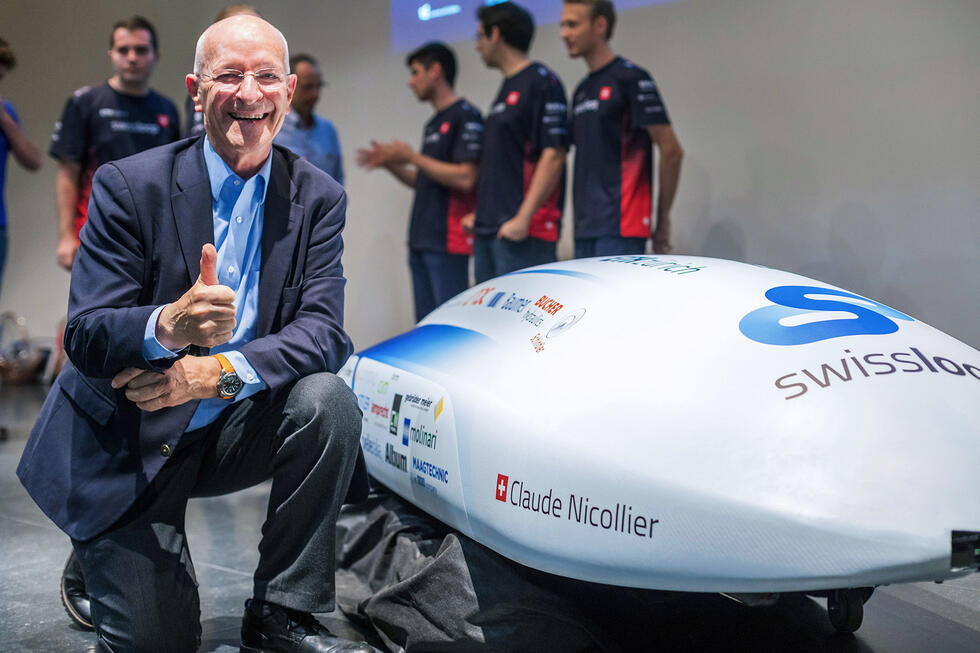
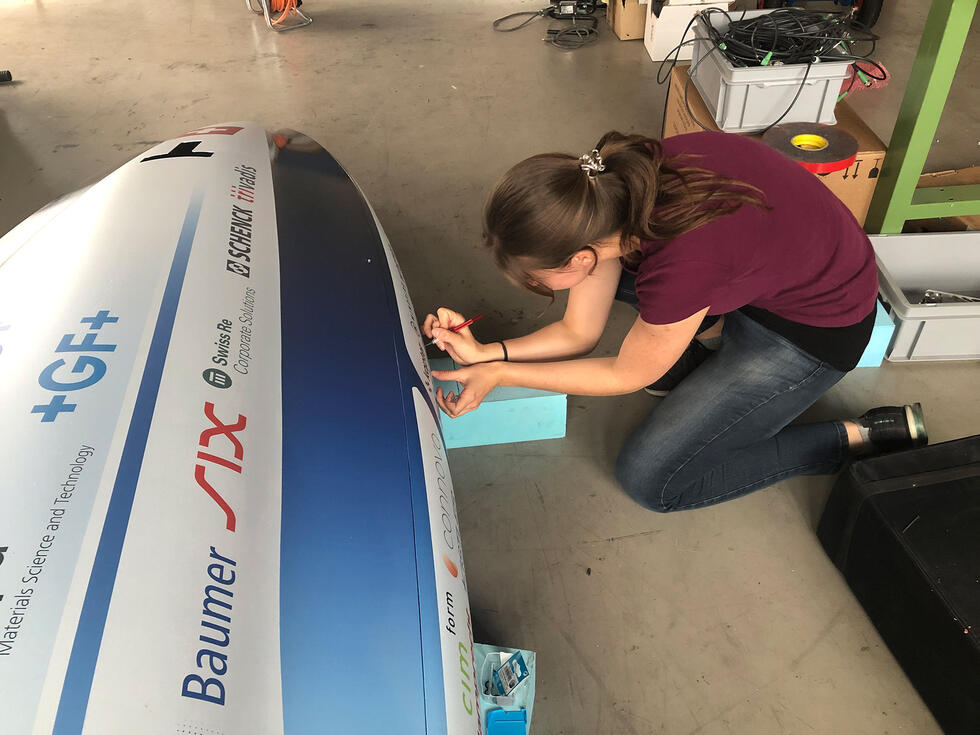
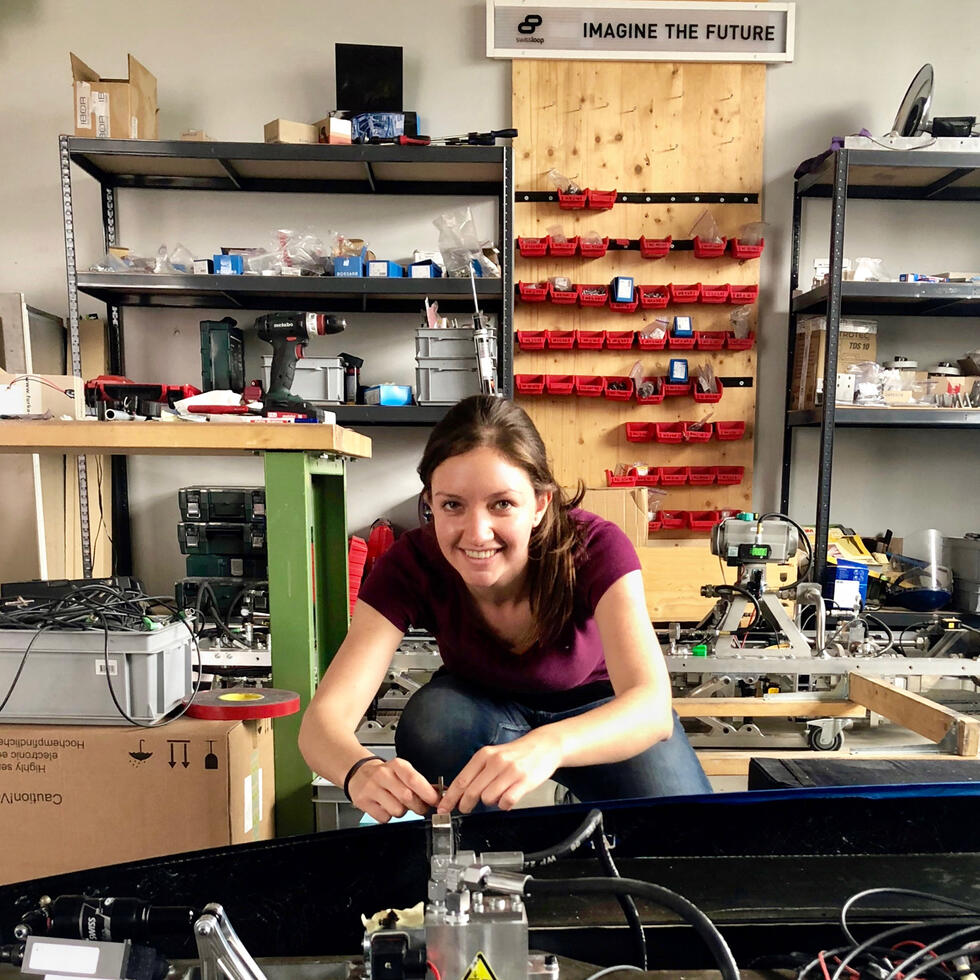
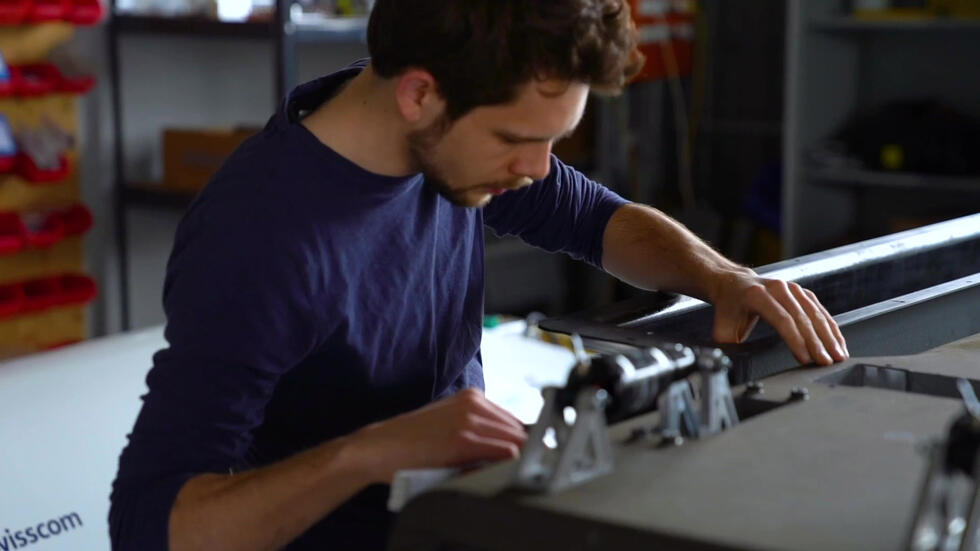
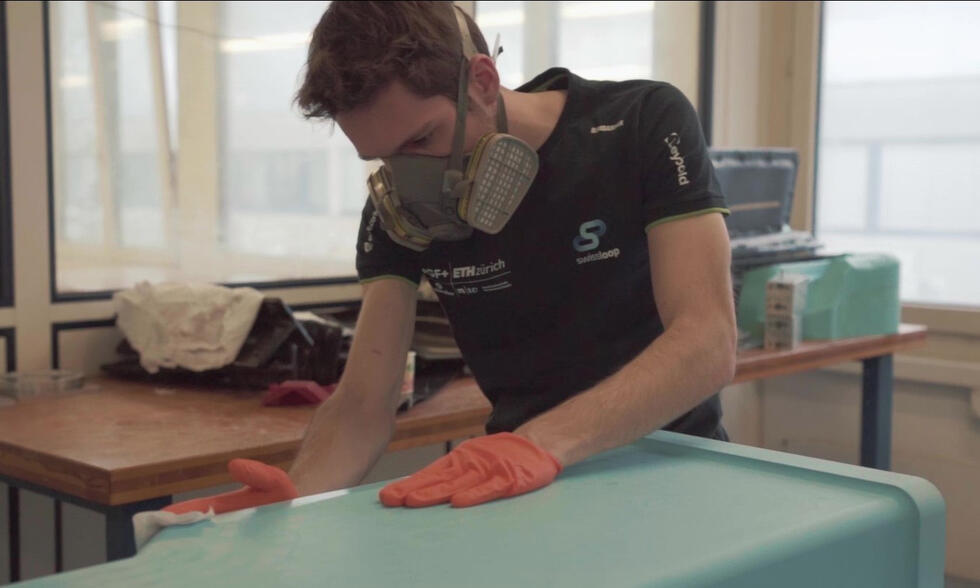
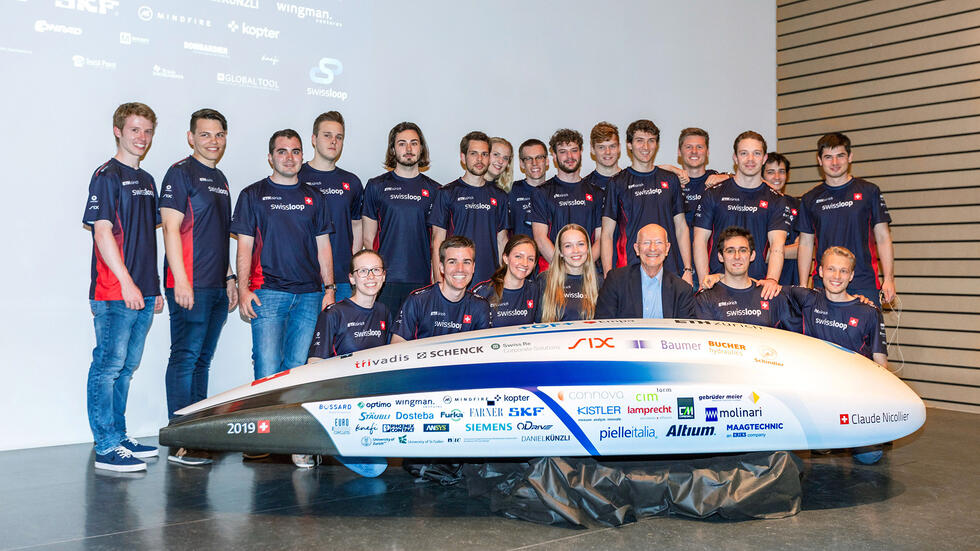
About Swissloop
Swissloop is an independent association of students from the ETH and the University of Zurich, the University of St. Gallen, and the University of Applied Sciences and Arts Northwestern Switzerland. More than fifty students have participated in this project since 2016. The prototypes of the Swissloop pod are developed by students of mechanical engineering, electrical engineering, and materials science at the ETH Zurich. In 2017, Swissloop competed with their ‘Escher’ pod and achieved third place, with ‘Mujinga’ in 2018 they didn’t survive the elimination round. In 2019, the team finished second with ‘Claude Nicollier’. In 2020, Swissloop will again participate in the 'SpaceX Hyperloop Pod Competition' in Los Angeles.
Written by:
Photos: Swissloop









































































































